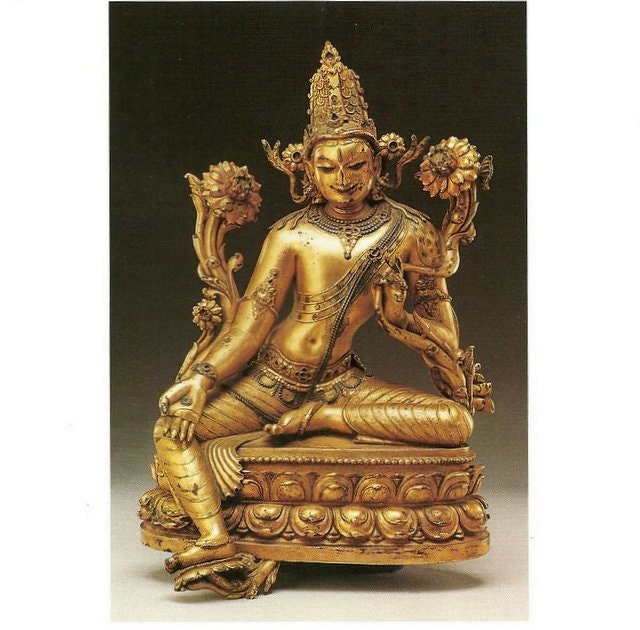
Detail of a Leaf with the Birth of Mahavira
The Jainist depiction of the birth of the founder of Janism above parallels Bhuddism as well as Christianity. Similar to Bhudda, the child is born to a royal family, and similar to Christianity, he is depicted with the face and body of a full grown man despite having just been born. This technique, like the medieval Madonna and Child, is used to emphasize the child’s divinity and inherent, holy wisdom. The people are flatly drawn and there is little depth in this piece. The people are semi-realistic but the proportions are inaccurate and the child being shown as a man is unrealistic.

The Bodhisattva Avalokiteshvara
The englightened individual depicted in this sculpture, Bodhisattva Avalokiteshvara, was infamous for his vow that his path on earth would not be complete until he had relieved the suffering of all rational beings. This vow connects and relates him to the Lotus flower, which symbolizes enlightenment while still in this world, as you can see by the Lotus flower under his foot, his seat, and above him.
There is a similar intricate, decorative, Bhuddist aesthetic to both pieces. Both depict chakras and urnas. The sculpture, however, is more naturalistic while still having the stylistic Bhuddist elements of the clothing and structure of the face.
-(provide more pictures and info.) (talk about why he sits in that posture, design of the statue)
HR: Pete, Zach for in class edits

